Review: The DJI Osmo Mobile 3 gimbal is more compact & powerful than ever
Over the past few years, the market has flooded with smartphone gimbals due to the quality of smartphone cameras, plus falling costs and miniaturization of gimbal technology. DJI has been at the forefront of all this, and is continuing that with the Osmo Mobile 3 gimbal.
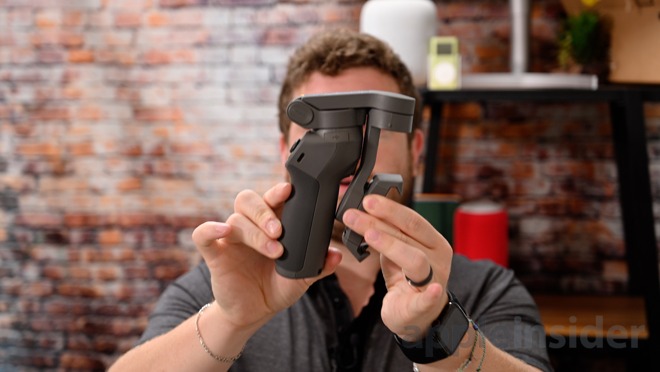
The new DJI OSMO Mobile 3 is far more compact
DJI improved the gimbal with the second generation including significantly dropping the price. The third-generation -- the Osmo Mobile 3 -- encapsulates the biggest changes yet.
There are three major changes to the design of the gimbal, all of which have major ramifications.
The body of the Osmo Mobile 3 is now foldable, which is a major advantage for taking the gimbal on the go. People rarely shoot with a gimbal around the home, so a more compact package will benefit almost everyone.
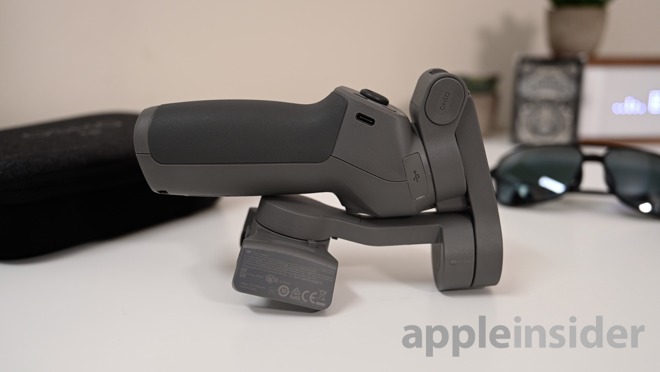
The updated DJI OSMO 3 can now fold
The smartphone clip on the Osmo Mobile 3 is redesigned, completely changed from the Osmo 2. Previously, the bottom of the phone was up against a rubberized pad which blocked the charging port and microphone. Now with those both free, the phone can be charged while filming or a lav mic can be connected.
It is also far more ergonomic. The Osmo Mobile 3 weighs less, is more compact, and the grip is angled around 15-degrees to making holding it comfortable for longer periods.
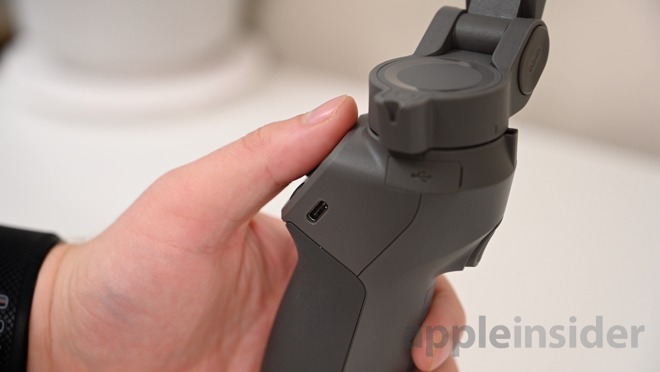
DJI OSMO 3 has a USB-C port for charging and a USB-A output for your smartphone
Other changes include a transition to USB-C for charging, and the return of the much-missed trigger button.
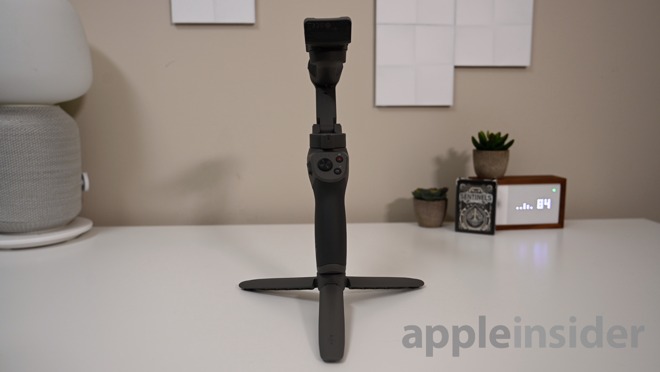
The DJI OSMO 3 on its tripod (included in combo kit)
Some are improvements over what we saw earlier iterations. ActiveTrack version 3.0 is far faster and smoother than it has been in the past. Osmo 2 would occasionally lose the subject whereas the 3 has not. It also can more easily identify people with glasses, hats, or facial hair.
ActiveTrack still isn't perfect, though. While filming outdoors the camera did occasionally lose us when we turned our faces away from the camera momentarily.
In conjunction with ActiveTrack, the Osmo Mobile 3 is also able to now capture slow-motion footage at 240 frames per second at 1080 rather than only 120.
Other changes are designed with the new hardware in mind. For example, the M button can be held down to activate standby mode. This rotates the phone around to easily fold the gimbal, letting you use your phone while still held in the gimbal. When done checking footage or texting, another short hold will bring it right back to life and ready to shoot.
A double-tap of that M button will also smoothly transition from portrait to landscape orientation with a move called Quick Roll.
While in front of the camera -- either the selfie or rear cameras -- gestures are now supported to begin capture. A palm or a peace sign exposed to the camera triggers a countdown that ends in a photo or video taken, depending on the current filming mode.
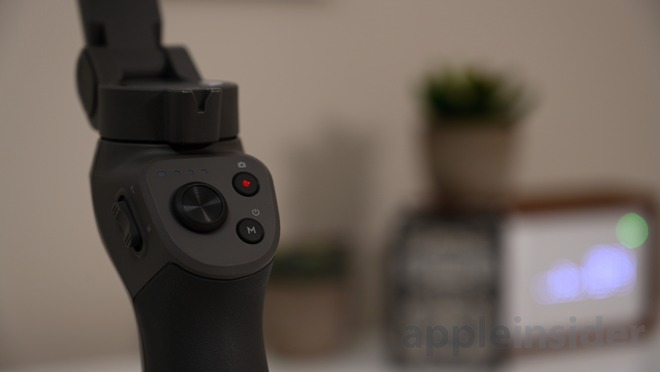
"The controls of the DJI OSMO Mobile 3
Looking at the gimbal, there is a series of LED lights representing battery life, a red shutter button, the M button that doubles as the power button that we already talked about, and a joystick used for moving the camera's POV.
On the left side of the body is a slider used to increase or decrease the level of digital zoom. On the opposing side is the new USB-C port used for charging the internal battery which can power the gimbal for up to 15 hours. It is perched next to the USB-A out port which can be used to charge your iPhone while you film.
That leaves the front side of the gimbal which is home to the resurrected trigger button. It is a bit of a shallow button press, but it is there and makes using the gimbal better. It can be customized in settings, but generally speaking, it can be triple-clicked to alternate between the selfie and rear cameras, as well as held to lock the POV position while filming.
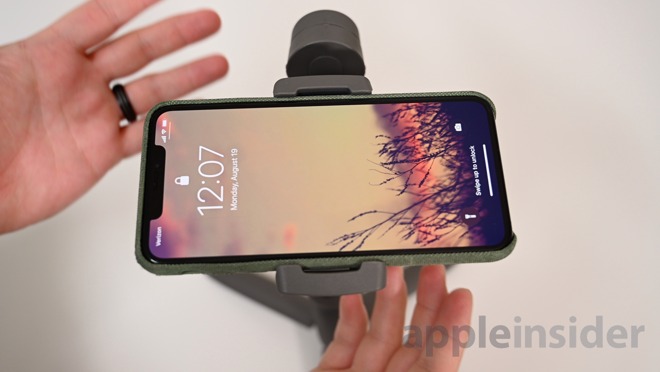
You need to balance your phone each time you use the DJI OSMO Mobile 3
One issue that we encountered with the redesigned body is having to balance our phone each time we use it. With the previous design, it had an adjustable arm which was as easy as set-it-and-forget-it. You balanced it once for your phone and you were done, but the new design leaves you balancing your phone each time which can take crucial seconds to accomplish.
This procedure is easy to do and can even be balanced with something like a Moment lens without a counterbalance.
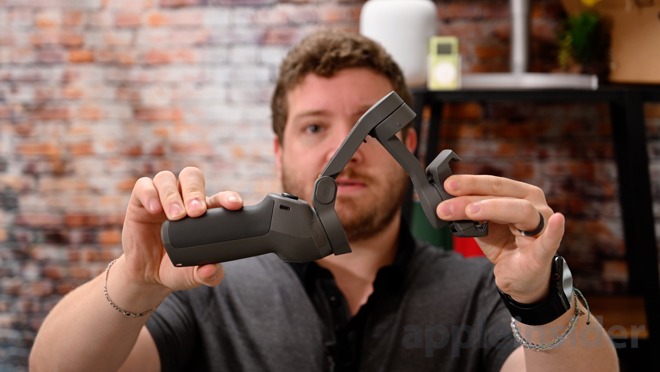
Unfolding the DJI OSMO Mobile 3 smartphone gimbal
Another feature that we loved was the ability to remotely trigger the camera via gestures rather than manually pressing the button. We threw the Osmo 3 up on the tripod, got in front of the camera, and with a quick peace sign the countdown started. It is a very easy way to start the camera and you don't have to trim anything after.
Our footage shot with the stabilizer was far smoother than when shot freehand, even with Apple's impressive optical image stabilization of the newer devices. We also didn't see any fighting between the iPhone's OIS and the stabilizer's compensation. Check out the video above to see the stabilized footage for yourself.
After years of using the previous Osmo gimbals, there was a degree of muscle memory that we had to overcome. The degree of tilt on this new one is severely limited so when trying to do low-to-high panning shots we kept accidentally going too far and the phone would hit the bar or be moved.
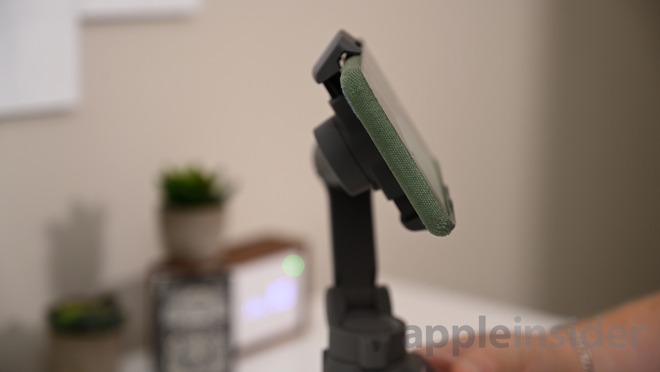
A workaround exists, where you move your arm to the side and tilt -- mirroring pouring liquid from a pitcher -- which then gives you the ability to tilt more aggressively.
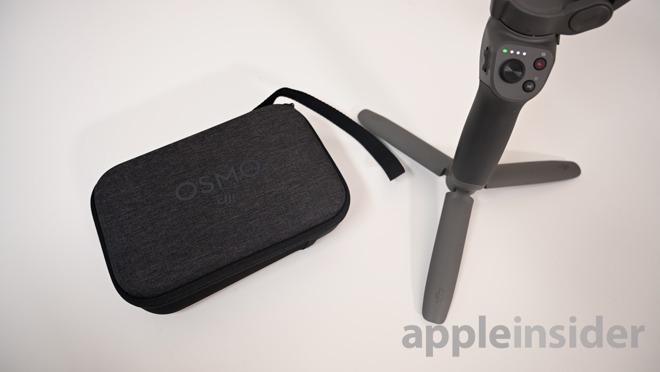
DJI OSMO Mobile 3 combo kit with case and tripod
Something we used quite a bit in filming this time around was the tripod. It was so useful and compact, with functionality added with the new gesture support. When deciding between just the gimbal and the combo, we'd recommend going for the combo setup.
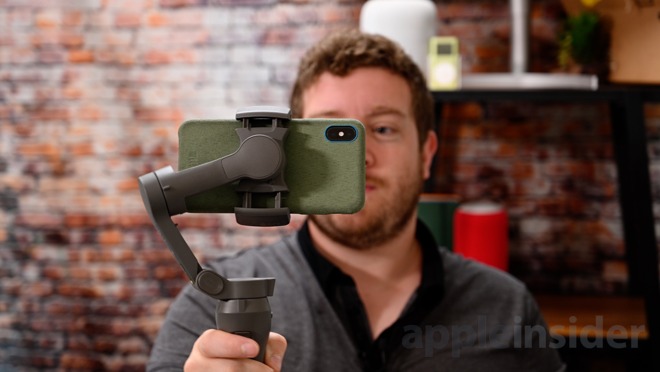
Filming with the DJI OSMO Mobile 3
While we were limited by some features of the Osmo 3 such as tilting and have to balance the phone each time, the Osmo 3 makes up for it with a far more compact design, the ability to charge or connect a mic while filming, the return of the trigger, a more comfortable grip, and more powerful software features.

The new DJI OSMO Mobile 3 is far more compact
DJI improved the gimbal with the second generation including significantly dropping the price. The third-generation -- the Osmo Mobile 3 -- encapsulates the biggest changes yet.
Osmo Mobile 3 Design
There are three major changes to the design of the gimbal, all of which have major ramifications.
The body of the Osmo Mobile 3 is now foldable, which is a major advantage for taking the gimbal on the go. People rarely shoot with a gimbal around the home, so a more compact package will benefit almost everyone.

The updated DJI OSMO 3 can now fold
The smartphone clip on the Osmo Mobile 3 is redesigned, completely changed from the Osmo 2. Previously, the bottom of the phone was up against a rubberized pad which blocked the charging port and microphone. Now with those both free, the phone can be charged while filming or a lav mic can be connected.
It is also far more ergonomic. The Osmo Mobile 3 weighs less, is more compact, and the grip is angled around 15-degrees to making holding it comfortable for longer periods.

DJI OSMO 3 has a USB-C port for charging and a USB-A output for your smartphone
Other changes include a transition to USB-C for charging, and the return of the much-missed trigger button.
Software and features
Within the gimbal are many software changes that complement the hardware changes.
The DJI OSMO 3 on its tripod (included in combo kit)
Some are improvements over what we saw earlier iterations. ActiveTrack version 3.0 is far faster and smoother than it has been in the past. Osmo 2 would occasionally lose the subject whereas the 3 has not. It also can more easily identify people with glasses, hats, or facial hair.
ActiveTrack still isn't perfect, though. While filming outdoors the camera did occasionally lose us when we turned our faces away from the camera momentarily.
In conjunction with ActiveTrack, the Osmo Mobile 3 is also able to now capture slow-motion footage at 240 frames per second at 1080 rather than only 120.
Other changes are designed with the new hardware in mind. For example, the M button can be held down to activate standby mode. This rotates the phone around to easily fold the gimbal, letting you use your phone while still held in the gimbal. When done checking footage or texting, another short hold will bring it right back to life and ready to shoot.
A double-tap of that M button will also smoothly transition from portrait to landscape orientation with a move called Quick Roll.
While in front of the camera -- either the selfie or rear cameras -- gestures are now supported to begin capture. A palm or a peace sign exposed to the camera triggers a countdown that ends in a photo or video taken, depending on the current filming mode.
Osmo Mobile 3 walkthrough
Osmo 3 has a simple, easy to use design and relies on the DJI Mimo app and connects to an iPhone over Bluetooth 5 -- up from Bluetooth 4.2.
"The controls of the DJI OSMO Mobile 3
Looking at the gimbal, there is a series of LED lights representing battery life, a red shutter button, the M button that doubles as the power button that we already talked about, and a joystick used for moving the camera's POV.
On the left side of the body is a slider used to increase or decrease the level of digital zoom. On the opposing side is the new USB-C port used for charging the internal battery which can power the gimbal for up to 15 hours. It is perched next to the USB-A out port which can be used to charge your iPhone while you film.
That leaves the front side of the gimbal which is home to the resurrected trigger button. It is a bit of a shallow button press, but it is there and makes using the gimbal better. It can be customized in settings, but generally speaking, it can be triple-clicked to alternate between the selfie and rear cameras, as well as held to lock the POV position while filming.

You need to balance your phone each time you use the DJI OSMO Mobile 3
One issue that we encountered with the redesigned body is having to balance our phone each time we use it. With the previous design, it had an adjustable arm which was as easy as set-it-and-forget-it. You balanced it once for your phone and you were done, but the new design leaves you balancing your phone each time which can take crucial seconds to accomplish.
This procedure is easy to do and can even be balanced with something like a Moment lens without a counterbalance.
Shooting with the DJI Osmo Mobile 3
We spent hours shooting with the Osmo 3 in various situations. We briefly played with the new story mode which is a cool way to instantly add effects for sharing to social media. The younger generation is going to have a lot of fun with this.
Unfolding the DJI OSMO Mobile 3 smartphone gimbal
Another feature that we loved was the ability to remotely trigger the camera via gestures rather than manually pressing the button. We threw the Osmo 3 up on the tripod, got in front of the camera, and with a quick peace sign the countdown started. It is a very easy way to start the camera and you don't have to trim anything after.
Our footage shot with the stabilizer was far smoother than when shot freehand, even with Apple's impressive optical image stabilization of the newer devices. We also didn't see any fighting between the iPhone's OIS and the stabilizer's compensation. Check out the video above to see the stabilized footage for yourself.
After years of using the previous Osmo gimbals, there was a degree of muscle memory that we had to overcome. The degree of tilt on this new one is severely limited so when trying to do low-to-high panning shots we kept accidentally going too far and the phone would hit the bar or be moved.

A workaround exists, where you move your arm to the side and tilt -- mirroring pouring liquid from a pitcher -- which then gives you the ability to tilt more aggressively.

DJI OSMO Mobile 3 combo kit with case and tripod
Something we used quite a bit in filming this time around was the tripod. It was so useful and compact, with functionality added with the new gesture support. When deciding between just the gimbal and the combo, we'd recommend going for the combo setup.

Filming with the DJI OSMO Mobile 3
While we were limited by some features of the Osmo 3 such as tilting and have to balance the phone each time, the Osmo 3 makes up for it with a far more compact design, the ability to charge or connect a mic while filming, the return of the trigger, a more comfortable grip, and more powerful software features.


Comments
when in a case that doesn’t fit in my backpack. The 3’s rebalancing does cause some concern as that can be a pain, but I expect I would get good at it. Having the lightening port back for use on the 3 is important. Apple’s elimination of the headphone / mic Jack is problematic on the 2, even with adapters.